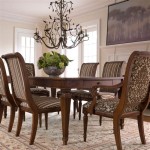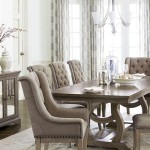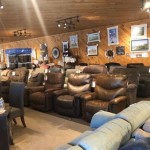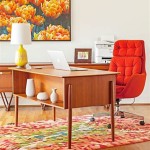Wooden Furniture Legs With Casters: A Practical and Aesthetic Solution
Wooden furniture legs with casters represent a fusion of classic aesthetics and modern practicality. This combination allows for easy mobility of furniture pieces while retaining the warmth and elegance associated with wood. These legs are increasingly popular in residential and commercial settings, offering a versatile solution for various furniture types. Their construction, design considerations, and applications warrant a closer examination.
The primary function of wooden furniture legs with casters is to provide support and mobility to furniture. The wooden leg provides the structural integrity and aesthetic appeal, while the caster, typically made of metal or durable plastic, facilitates smooth movement across various floor surfaces. These legs are available in a wide range of sizes, styles, and wood types, accommodating diverse furniture designs and weight requirements.
The selection of appropriate materials for wooden furniture legs with casters is crucial for ensuring both durability and aesthetic appeal. The wood type, caster material, and finish all contribute to the overall performance and longevity of the product. Considerations must be given to the expected load, frequency of movement, and the environment in which the furniture will be used.
Wood Selection and Treatment
The choice of wood significantly affects the strength, appearance, and cost of the furniture legs. Hardwoods like oak, maple, and cherry are commonly chosen for their durability and resistance to wear and tear. Softwoods, such as pine and fir, offer a more affordable option but may not be as suitable for high-traffic areas or heavy furniture. Regardless of the wood type, proper drying and treatment are essential to prevent warping, cracking, and insect infestation.
Kiln drying is a common method used to reduce the moisture content of wood, enhancing its stability and preventing dimensional changes over time. This process involves carefully controlling the temperature and humidity to gradually remove moisture from the wood cells. After drying, the wood may be treated with preservatives or sealants to further protect it from environmental factors. These treatments can also enhance the wood's natural color and grain, adding to its aesthetic appeal.
The finishing process is also essential for protecting the wood and enhancing its appearance. Stains, varnishes, and paints can be applied to achieve the desired color and sheen. Polyurethane coatings are often used for their durability and resistance to scratches and stains. The choice of finish should complement the overall design of the furniture and withstand the rigors of daily use.
Caster Design and Functionality
Casters play a vital role in the mobility of furniture fitted with wooden legs. They are typically composed of a wheel, a yoke (or housing), and a stem or plate for attachment to the wooden leg. The wheel material, size, and bearing type influence the rolling performance and load capacity of the caster. These components affect the maneuverability, stability, and the type of flooring the caster can effectively navigate.
Wheel materials include hard materials like nylon and polyurethane, which are ideal for hard surfaces such as wood or tile, and softer materials like rubber, which are better suited for delicate surfaces like carpets or hardwood floors. Harder wheels tend to roll more easily and support heavier loads, while softer wheels provide better grip and minimize the risk of scratching or damaging floor surfaces.
The yoke, or housing, supports the wheel and allows it to swivel or remain fixed. Swivel casters provide greater maneuverability, while fixed casters are better suited for linear movement. The yoke material is typically metal, such as steel or aluminum, to provide strength and durability. Ball bearings are often incorporated into the swivel mechanism to ensure smooth and effortless rotation. The stem or plate is the means by which the caster is attached to the wooden leg. Stems can be threaded or unthreaded, and plates are typically attached with screws or bolts. The choice of attachment method depends on the design of the wooden leg and the desired level of security.
Brake mechanisms are sometimes included in the caster design to provide added stability and prevent unintentional movement. These brakes can be engaged or disengaged manually, providing a locking function that keeps the furniture in place when needed. Brakes are particularly useful for furniture used in areas with uneven surfaces or where stability is paramount.
Integration and Design Considerations
The successful integration of wooden legs and casters requires careful consideration of both structural and aesthetic aspects. The design must ensure that the legs can support the weight of the furniture and its contents, while the casters provide smooth and reliable movement. The aesthetic integration should be seamless, with the casters complementing the overall style of the furniture.
The attachment of the casters to the wooden legs is a critical step in the manufacturing process. The method of attachment must be strong and secure to prevent the casters from detaching under load. Threaded stems are often used for their ease of installation and adjustability, while plates provide a more robust connection for heavier furniture. Reinforcements, such as metal inserts or bracing, may be added to the wooden legs to enhance their strength and prevent splitting or cracking.
The overall design of the wooden legs should complement the style of the furniture. Tapered legs, turned legs, and straight legs are all common options, each offering a different aesthetic appeal. The size and shape of the legs should be proportional to the furniture, creating a balanced and visually pleasing appearance. The finish of the legs should also match or complement the finish of the furniture, creating a cohesive and harmonious design.
The height of the legs and casters should be carefully considered to ensure that the furniture is at the correct height for its intended use. The added height of the casters should be factored into the overall dimensions of the furniture to avoid making it too tall or too short. Adjustable legs with casters are available, allowing for fine-tuning of the height to accommodate different floor surfaces or user preferences. These are especially useful in office settings.
Accessibility is a key consideration when designing furniture with wooden legs and casters. The casters should allow the furniture to be easily moved around obstacles and through doorways. The wheel size and type should be appropriate for the floor surfaces in the intended environment. Soft wheels may be preferable for delicate surfaces, while hard wheels may be better suited for high-traffic areas.
The weight capacity of the legs and casters must be carefully calculated to ensure that they can safely support the furniture and its contents. The load should be evenly distributed across all four legs to prevent overloading any one point. The manufacturer should provide clear specifications for the weight capacity of the legs and casters to ensure safe and reliable operation.
Durability and maintenance are also important considerations. The legs and casters should be made of durable materials that can withstand the rigors of daily use. The finish on the wooden legs should be resistant to scratches and stains, and the casters should be easy to clean and maintain. Regular inspection and maintenance can help to prolong the life of the furniture and ensure that it continues to function properly.
Environmental factors, such as humidity and temperature, can also affect the performance of wooden furniture legs with casters. Wood is a natural material that can expand and contract in response to changes in humidity. Extreme temperature fluctuations can also cause the wood to warp or crack. It is important to protect the furniture from these environmental factors to prevent damage and ensure its longevity. Climate controlled environments will usually ensure longevity of the wood.
The design of wooden furniture legs with casters can also incorporate features to enhance their functionality and aesthetic appeal. Decorative elements, such as carvings, inlays, or metal accents, can be added to the legs to create a more unique and stylish look. Custom finishes, such as distressed or antique finishes, can also be applied to the legs to match the overall design of the furniture. The use of sustainable materials and eco-friendly manufacturing processes can also add value to the product and appeal to environmentally conscious consumers.

Lwq8w Square Furniture Legs With Casters Walnut Finish Ronco

Wood Turned Tapered Furniture Leg 7 Tall With Finish And Caster Options

Sienna Wooden Legs With Castors Customised Furniture Heritage Components

Lavinia Wooden Furniture Legs With Casters Chestefields And Sofas Heritage Components

Lwt8w Carved Turned Furniture Legs With Casters Walnut Finish Ronco

Solid Wooden Feet With Antique Castors Set Of 4 Legs 155mm High Sofas Chairs Furniture Stools Cabinets Beds M8 Mahogany Finish Etsy

Wooden Turned Tapered Furniture Legs With Roller Caster Wheels 8 25 Set Of 2 Ebay

Wooden Castor Foot Wf3295

Wood Square Tapered Furniture Leg 6 Tall With Finish Caster Options

Lavinia Wooden Furniture Legs With Casters Chestefields And Sofas Heritage Components
See Also








